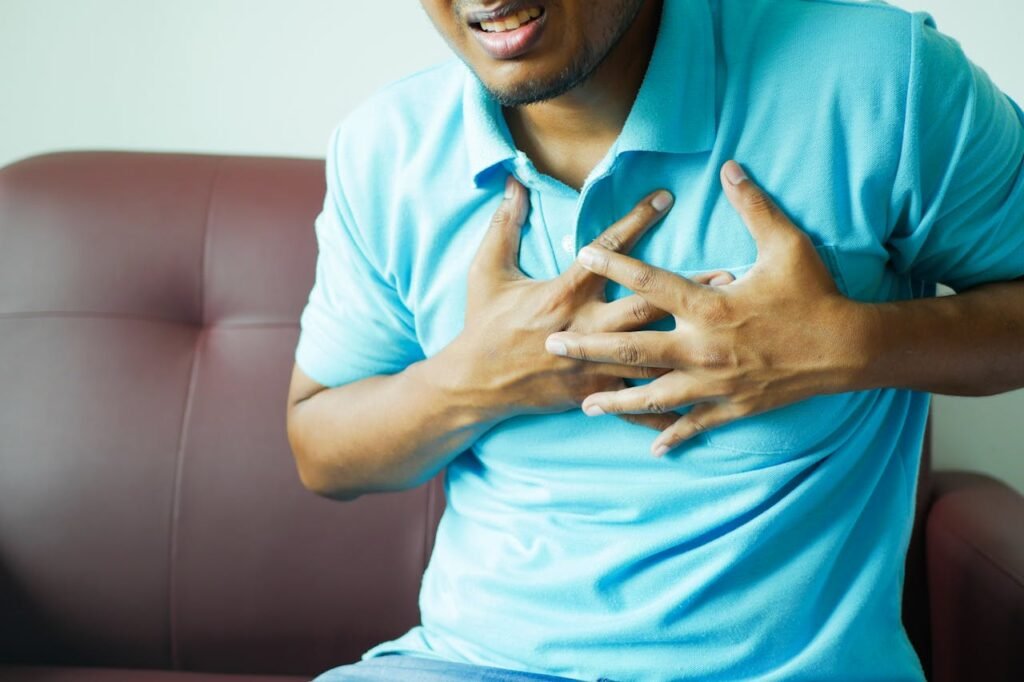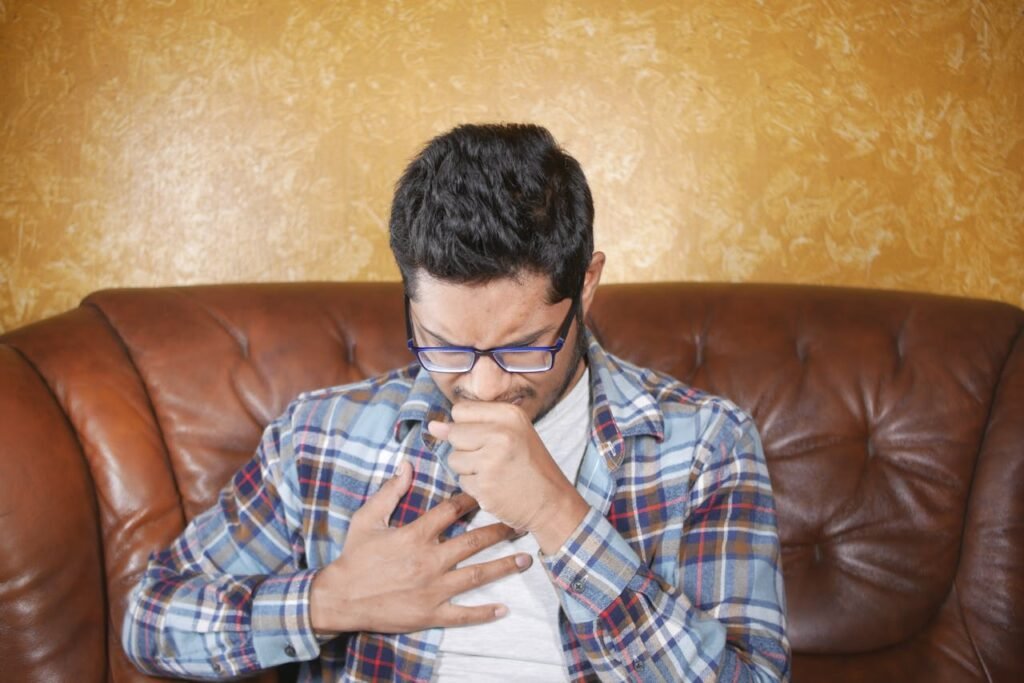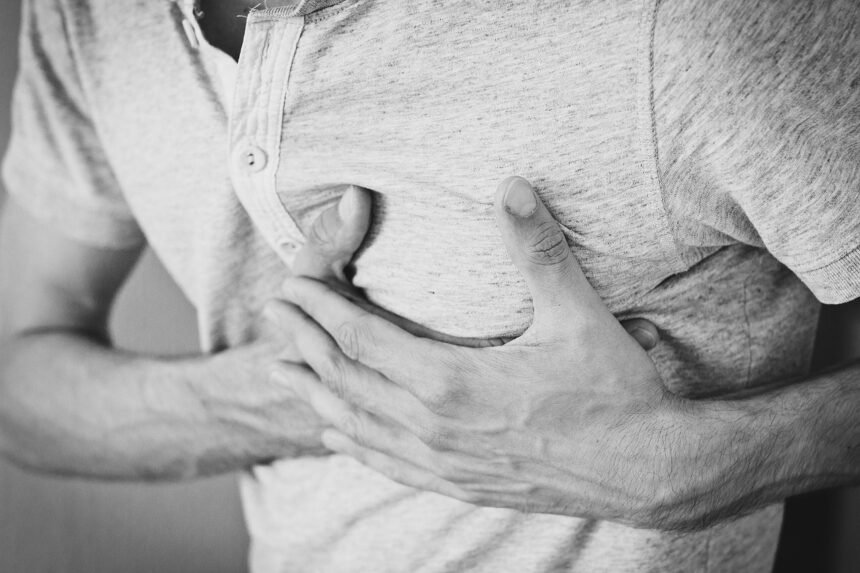Stroke affects approximately 100,000 people annually in the United Kingdom, making it the fourth leading cause of death and the leading cause of adult disability, according to the Stroke Association. Every five minutes, someone in the UK has a stroke, with devastating consequences for individuals, families, and society. However, up to 90% of strokes are preventable through lifestyle modifications and appropriate medical management, whilst rapid recognition and treatment can dramatically improve outcomes.
Understanding Stroke: Types and Mechanisms
A stroke occurs when blood supply to part of the brain is interrupted or reduced, preventing brain tissue from receiving oxygen and nutrients. The NHS describes stroke as a medical emergency requiring immediate treatment to minimise brain damage and potential complications.
Types of Stroke:
Ischaemic Stroke (87% of all strokes):
Caused by blocked blood vessels supplying the brain:
- Thrombotic stroke: Blood clot forms in artery supplying brain
- Embolic stroke: Blood clot travels from elsewhere in body
- Lacunar stroke: Small vessel disease causing tiny strokes
- Often associated with atherosclerosis and cardiovascular disease
Haemorrhagic Stroke (13% of all strokes):
Caused by bleeding in or around the brain:
- Intracerebral haemorrhage: Bleeding within brain tissue
- Subarachnoid haemorrhage: Bleeding between brain and skull
- Often associated with high blood pressure or ruptured aneurysms
- Generally more severe with higher mortality rates
Transient Ischaemic Attack (TIA):
Often called “mini-stroke”:
- Temporary interruption of blood flow to brain
- Symptoms resolve completely within 24 hours (usually <1 hour)
- Warning sign of increased stroke risk
- Requires urgent medical assessment and prevention strategies
Brain Anatomy and Stroke Effects:
Cerebral Circulation:
- Carotid arteries: Supply front and middle portions of brain
- Vertebrobasilar system: Supplies brainstem and back of brain
- Circle of Willis: Provides collateral circulation
- Blockage location determines specific symptoms
Brain Regions and Functions:
- Frontal lobe: Executive function, personality, motor control
- Parietal lobe: Sensory processing, spatial awareness
- Temporal lobe: Language, memory, hearing
- Occipital lobe: Vision processing
- Brainstem: Vital functions (breathing, consciousness)
- Cerebellum: Balance and coordination
Risk Factors for Stroke
Understanding stroke risk factors enables targeted prevention strategies. The World Stroke Organization identifies both modifiable and non-modifiable risk factors.
Non-Modifiable Risk Factors:
Age:
- Stroke risk doubles every decade after age 55
- However, 25% of strokes occur in people under 65
- Paediatric strokes, whilst rare, do occur
- Age-related vascular changes increase vulnerability
Gender:
- Men have 25% higher stroke risk than women
- Women have more severe strokes and worse outcomes
- Pregnancy and oral contraceptives increase women’s risk
- Hormonal factors influence stroke patterns
Ethnicity:
- African-Caribbean populations have twice the stroke risk
- South Asian populations also face elevated risk
- Genetic factors and higher prevalence of risk factors contribute
- Access to healthcare may influence outcomes
Family History:
- Having close relatives with stroke increases risk
- Genetic factors influence blood pressure, diabetes, cholesterol
- Some rare genetic conditions significantly increase risk
- Family history of cardiovascular disease also relevant
Modifiable Risk Factors:
Hypertension:
The most important modifiable risk factor:
- Present in 70% of stroke patients
- Increases risk 3-4 fold
- Even mildly elevated blood pressure increases risk
- Effective treatment reduces stroke risk by 30-40%
Atrial Fibrillation:
Irregular heart rhythm increases stroke risk:
- Increases stroke risk 5-fold
- Responsible for 20% of all strokes
- Often undiagnosed and untreated
- Anticoagulation dramatically reduces risk
Diabetes:
Doubles stroke risk:
- Accelerates atherosclerosis
- Often coexists with other risk factors
- Good glucose control reduces risk
- Requires comprehensive cardiovascular risk management
High Cholesterol:
Contributes to atherosclerosis:
- Elevated LDL cholesterol increases risk
- Statin therapy provides significant protection
- Benefits extend beyond cholesterol lowering
- Particularly important for secondary prevention
Smoking:
Increases stroke risk 2-4 fold:
- Accelerates atherosclerosis
- Increases blood clotting tendency
- Affects blood vessel function
- Quitting provides rapid risk reduction
Physical Inactivity:
Sedentary lifestyle increases risk:
- Regular exercise reduces risk by 25-30%
- Improves multiple cardiovascular risk factors
- Benefits seen with moderate activity levels
- Exercise rehabilitation important after stroke

Recognising Stroke: The FAST Test
Rapid recognition of stroke symptoms is crucial for effective treatment. The Stroke Association promotes the FAST test for immediate stroke recognition.
FAST Assessment:
F – Face:
- Facial weakness or drooping
- Can the person smile?
- Is their smile uneven or lopsided?
- Has their mouth or eye drooped?
A – Arms:
- Arm weakness
- Can the person raise both arms?
- Does one arm drift downward?
- Are they able to keep both arms up?
S – Speech:
- Speech problems
- Is their speech slurred or garbled?
- Are they having trouble understanding?
- Can they repeat a simple phrase clearly?
T – Time:
- Time to call emergency services
- Note time symptoms first appeared
- Call 999 immediately if any signs present
- Don’t wait to see if symptoms improve
Additional Stroke Symptoms:
BE-FAST (Extended Version):
- B – Balance: Sudden loss of balance, coordination, dizziness
- E – Eyes: Sudden vision loss or visual field defects
Other Important Symptoms:
- Sudden severe headache with no known cause
- Sudden confusion or trouble understanding
- Sudden numbness, especially on one side
- Sudden trouble walking or loss of coordination
When to Seek Emergency Care:
Call 999 Immediately For:
- Any FAST test abnormalities
- Sudden onset of severe symptoms
- Even if symptoms seem to be improving
- TIA symptoms (don’t wait for resolution)
Don’t Wait:
- Symptoms may fluctuate or worsen
- Brain damage occurs rapidly
- Treatment effectiveness decreases with time
- Family members should not drive patient to hospital
Emergency Treatment and Acute Care
Stroke treatment follows the principle “time is brain” – rapid intervention can save brain tissue and improve outcomes. The Royal College of Physicians emphasises organised stroke care delivery.
Emergency Assessment:
Initial Evaluation:
- Rapid clinical assessment using standardised scales
- Blood tests (glucose, clotting function, kidney function)
- Brain imaging (CT or MRI scan)
- ECG to check heart rhythm
- Assessment of consciousness level and vital signs
Brain Imaging:
- CT scan: Quick assessment to rule out bleeding
- MRI scan: More detailed brain tissue assessment
- CT angiography: Visualises blood vessels
- Perfusion studies: Assess potentially salvageable brain tissue
Acute Treatments:
Thrombolysis (“Clot-busting”):
For ischaemic strokes within treatment window:
- IV alteplase: Standard treatment within 4.5 hours
- Benefit: 30% improvement in outcomes when given early
- Risk: Small increased bleeding risk
- Assessment: Careful patient selection crucial
Thrombectomy:
Mechanical clot removal for large vessel occlusions:
- Procedure: Catheter-based clot retrieval
- Time window: Up to 24 hours in selected patients
- Effectiveness: Can achieve complete recovery
- Availability: Specialist centres only
Management of Haemorrhagic Stroke:
- Blood pressure control (careful monitoring)
- Reversal of anticoagulation if present
- Surgical intervention for some cases
- Management of increased brain pressure
Stroke Unit Care:
Specialised Teams:
- Stroke physicians and neurologists
- Specialist nurses trained in stroke care
- Physiotherapists and occupational therapists
- Speech and language therapists
- Dietitians and pharmacists
Monitoring and Support:
- Continuous monitoring of vital signs
- Swallowing assessment before oral intake
- Early mobilisation when safe
- Prevention of complications
- Psychological support for patients and families
Recovery and Rehabilitation
Stroke recovery is a complex process involving multiple healthcare professionals and often lasting months to years. The Different Strokes charity emphasises that recovery potential varies greatly between individuals.
Phases of Recovery:
Acute Phase (First few days):
- Medical stabilisation
- Prevention of complications
- Early assessment of deficits
- Beginning of rehabilitation process
Sub-acute Phase (Weeks to months):
- Intensive rehabilitation
- Relearning skills and compensatory strategies
- Community reintegration planning
- Family education and support
Chronic Phase (Months to years):
- Ongoing improvement possible
- Maintenance of function
- Prevention of secondary stroke
- Long-term support and adaptation
Types of Rehabilitation:
Physical Therapy:
- Motor function recovery
- Balance and coordination training
- Mobility aids and equipment
- Strengthening and endurance exercises
- Gait training and walking improvement
Occupational Therapy:
- Activities of daily living
- Cognitive rehabilitation
- Home and workplace modifications
- Assistive technology and equipment
- Driving assessment and training
Speech and Language Therapy:
- Aphasia: Language difficulties after stroke
- Dysarthria: Speech muscle weakness
- Dysphagia: Swallowing difficulties
- Communication aids and strategies
- Cognitive-communication problems
Psychological Support:
- Depression affects 30% of stroke survivors
- Anxiety and post-traumatic stress
- Adjustment to disability and role changes
- Family counselling and support
- Cognitive behavioural therapy approaches
Recovery Principles:
Neuroplasticity:
- Brain’s ability to reorganise and form new connections
- Recovery possible even years after stroke
- Intensive practice promotes brain reorganisation
- Task-specific training most effective
Family and Caregiver Involvement:
- Family education crucial for recovery
- Caregiver training and support
- Home environment modifications
- Long-term care planning

Secondary Prevention
Preventing recurrent stroke is crucial, as stroke survivors face 10 times higher risk of subsequent strokes. The NICE guidelines provide comprehensive secondary prevention recommendations.
Medication Management:
Antiplatelet Therapy:
- Aspirin 75mg daily (standard treatment)
- Clopidogrel for aspirin-intolerant patients
- Dual antiplatelet therapy in specific circumstances
- Lifelong treatment usually required
Anticoagulation:
For patients with atrial fibrillation:
- Warfarin or direct oral anticoagulants (DOACs)
- Significantly reduces stroke risk
- Regular monitoring and adjustment needed
- Balance stroke risk against bleeding risk
Blood Pressure Management:
- Target <130/80 mmHg for most patients
- ACE inhibitors or ARBs preferred
- Combination therapy often needed
- Regular monitoring and adjustment
Cholesterol Management:
- High-intensity statin therapy
- Target LDL cholesterol <1.8 mmol/L
- Additional agents if targets not met
- Lifestyle modifications complement medication
Lifestyle Modifications:
Diet and Nutrition:
- Mediterranean-style diet recommended
- Reduced sodium intake (<2.3g daily)
- Increased fruits and vegetables
- Limit saturated and trans fats
- Moderate alcohol consumption
Physical Activity:
- Regular moderate exercise as tolerated
- Aim for 150 minutes weekly moderate activity
- Supervised exercise programmes beneficial
- Adapted exercises for stroke survivors
Smoking Cessation:
- Urgent priority for all stroke survivors
- Combination behavioural and pharmacological support
- Nicotine replacement therapy safe after stroke
- Significant stroke risk reduction within 2 years
Regular Monitoring:
Follow-up Appointments:
- Regular review with stroke specialist
- Blood pressure and medication monitoring
- Assessment of recovery progress
- Screening for complications and depression
Annual Health Checks:
- Comprehensive cardiovascular risk assessment
- Medication review and optimisation
- Functional assessment and support needs
- Prevention of other vascular diseases
Living with Stroke Effects
Stroke can cause various lasting effects requiring long-term adaptation and support. The Stroke Association provides comprehensive resources for stroke survivors and families.
Common Long-term Effects:
Physical Effects:
- Weakness or paralysis (hemiplegia/hemiparesis)
- Balance and coordination problems
- Fatigue and reduced stamina
- Pain and sensory changes
- Bladder and bowel problems
Cognitive Effects:
- Memory problems
- Attention and concentration difficulties
- Executive function impairment
- Spatial awareness problems
- Processing speed reduction
Communication Effects:
- Aphasia (language difficulties)
- Dysarthria (speech clarity problems)
- Reading and writing difficulties
- Social communication challenges
Emotional Effects:
- Depression and anxiety
- Emotional lability (mood swings)
- Loss of confidence
- Grief for previous abilities
- Social isolation
Support Resources:
Stroke Charities:
- Stroke Association: 0303 3033 100
- Different Strokes: Support for younger stroke survivors
- Speakability: Aphasia support and resources
- Connect: Communication disability support
Healthcare Services:
- Community stroke teams
- Stroke rehabilitation services
- GP and primary care support
- Specialist stroke clinics
Benefits and Financial Support:
- Personal Independence Payment (PIP)
- Disability Living Allowance
- Employment and Support Allowance
- Blue Badge parking permits
- Council tax reductions
Returning to Work:
Workplace Considerations:
- Gradual return with reduced hours
- Workplace adjustments and accommodations
- Occupational health assessment
- Access to Work scheme support
- Employer education about stroke effects
Prevention Strategies
Primary stroke prevention focuses on managing risk factors before stroke occurs. The World Stroke Organization promotes global prevention initiatives.
Population-Level Prevention:
Public Health Measures:
- Blood pressure screening programmes
- Atrial fibrillation detection initiatives
- Smoking cessation campaigns
- Healthy eating promotion
- Physical activity encouragement
Healthcare System Improvements:
- TIA clinics for rapid assessment
- Integrated cardiovascular care
- Quality improvement in stroke services
- Training for healthcare professionals
Individual Prevention:
Know Your Numbers:
- Regular blood pressure monitoring
- Cholesterol level checking
- Blood glucose testing
- Weight and BMI assessment
- Heart rhythm evaluation
Lifestyle Modifications:
- Healthy diet following Mediterranean principles
- Regular physical activity
- Smoking cessation
- Moderate alcohol consumption
- Stress management
Medical Management:
- Treatment of hypertension
- Diabetes management
- Cholesterol control
- Atrial fibrillation management
- Appropriate aspirin use
Conclusion
Stroke represents a medical emergency with potentially devastating consequences, but significant advances in prevention, treatment, and rehabilitation offer hope for improved outcomes. The key to reducing stroke’s impact lies in effective prevention through risk factor management, rapid recognition and treatment of acute stroke, and comprehensive rehabilitation support.
Understanding stroke warning signs, implementing prevention strategies, and accessing appropriate support services can dramatically improve outcomes for stroke survivors and their families. Resources from organisations like the Stroke Association and NHS provide valuable information and support throughout the stroke journey.
Remember that stroke is largely preventable, and even after stroke occurs, recovery and adaptation are possible with appropriate support and determination. Every minute counts in stroke care, making awareness and rapid action crucial for optimal outcomes.






